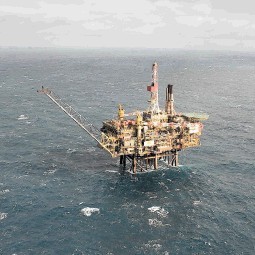
WORK started yesterday to remove gas trapped after August’s major oil leak at Shell’s Gannet field.
Extra precautions have had to be put in place to reduce the risk of further oil leaking out into the North Sea.
A spokeswoman for the oil giant said last night it planned to drill holes into six points along the isolated Gannet F flowline to allow the gas to vent safely.
In August, more than 200tonnes of oil spilled from the field into the sea.
Shell’s spokeswoman said: “Our assessments indicate that this process can be carried out safely and will not impact the environment or sea life.
“The initial phase of the operation is likely to take one week. If more gas needs to be evacuated, further work will be performed in November.”
She added: “The risk of any further oil escaping is viewed as very unlikely. However, contingency measures are in place, including a hose deployed from the surface vessel performing the operation, which would capture and contain any oil.
“In addition to the continual observations during the gas venting process, when the operation starts, an over-flight of the sea will be performed to detect if there is any unplanned release of oil.”
In August Shell started to remove up to 660tonnes of oil from the damaged pipeline in the field.
Divers only successfully closed the leaking valve a week after the spill was detected on August 10.
Shell is continuing with its own investigation into the cause of the oil leak.
There is also an ongoing joint investigation being carried out by Department of Energy and Climate Change and the Health and Safety Executive.
The area and the subsea flowline have been under constant observation since the leak was stopped and no subsequent oil release has been detected.
The Scottish Government earlier announced that Marine Scotland’s analysis of fish, sediment and water samples collected from the vicinity of the oil leak concluded that there has been no impact on marine life or wildlife.